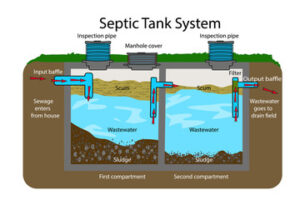Managed SEO changes how websites grow online. It offers a full-service approach to visibility. Unlike traditional methods, it works behind the scenes daily. It combines human planning with evolving digital signals.

The core of managed SEO lies in consistency. Algorithms reward long-term optimization patterns. Instead of chasing short bursts, it builds stable gains. This method favors businesses seeking lasting presence. Read on Rank Boss to learn more.
Managed systems track multiple ranking signals at once. They adapt as engines adjust search criteria. This creates a self-improving feedback loop. Manual SEO often fails to keep up with such shifts.
The shift includes predictive link placements. Managed SEO uses data to forecast high-value link opportunities. These forecasts rely on audience behavior patterns. Not every SEO setup offers such precision.
Content alignment is no longer just keyword-heavy. Managed systems examine tone, structure, and emotional triggers. They match these with intent-based query models. Results outperform generic writing every time.
Internal linking is now treated like network mapping. Managed SEO links related content using semantic logic. This helps users and bots navigate with clarity. Engines reward intuitive connections within pages.
Data layering adds new strength to optimization. Managed setups pull in metrics from multiple sources. This creates a deeper performance picture. Manual processes can’t achieve that level of synthesis.
Page speed is integrated with intent patterns. Faster pages aren’t enough anymore. Managed SEO maps user patience to page goals. Optimization adjusts based on where drop-offs begin.
User experience triggers now guide site changes. Bounce rates and heatmaps inform layout revisions. Managed SEO treats user signals as authority indicators. Better interaction drives better ranking without tricks.
Even image SEO has transformed. Alt tags and load order now tie to topical relevance. Managed systems rewrite image data based on trends. This taps into search engines’ evolving visual priorities.
Mobile-first indexing is core to the system. Managed SEO tests site layouts across dozens of screen types. This keeps the experience fluid everywhere. Engines prioritize flexible, responsive content design.
Content decay is handled proactively. Older pages get automatic performance checks monthly. If they drop in visibility, updates are queued. This preserves past efforts while keeping the site fresh.
Voice optimization is embedded from planning. Managed systems rewrite content in natural speech rhythm. This increases visibility in spoken queries. Traditional methods miss this rising traffic source.
Schema data is now treated as linkable content. Managed SEO injects custom markup per topic. This makes search results rich with snippets. Higher engagement comes from better presentation.
Managed SEO builds off cluster strategy. One page becomes the hub for many related articles. Each link reinforces the other’s value. The system builds topic authority that sticks.
Split-testing is no longer limited to design. SEO titles and meta descriptions go through multivariate testing. The best-performing variants get locked in. This iterative testing improves click-through rate steadily.
Structured automation prevents over-optimization. Managed SEO systems know when to stop. It adjusts frequency and density before penalties arise. This avoids the risk of algorithmic red flags.
External backlink health is always monitored. New links are scanned for source authority. Toxic links get flagged before they cause damage. Manual SEO often misses harmful trends in time.
Traffic intent is categorized beyond keywords. Managed systems detect whether users want answers, tools, or products. Pages get adapted to match those needs. Conversion improves without pushy changes.
Geolocation isn’t treated as static. Visitor data helps determine shifting regional trends. Managed SEO updates content for localized phrasing. This increases relevance without needing manual rewriting.
Search saturation is calculated per industry. Some niches require lighter touch on updates. Managed systems understand saturation thresholds. This prevents overexposure and keeps content desirable.
Even call-to-action design is optimized. SEO ties into user interface feedback. If buttons or forms underperform, they’re redesigned. These changes ripple through search rankings invisibly.
Reputation management now blends with SEO. Managed systems monitor brand mentions and tone. They guide content that supports positive narratives. This keeps the site’s presence clean and respected.
Temporal behavior now drives publishing schedules. Data reveals when users in a niche engage most. Managed systems push content at those peak moments. Timing boosts relevance and organic reach.
Sentiment analysis is also evolving. Managed SEO scans content for emotional balance. Overly negative or neutral pieces get refined. Search engines now favor emotionally engaging content.
Even page hierarchy is now dynamic. Managed systems suggest reordering menus and subpages. This helps distribute link authority more evenly. Flattened hierarchies often underperform structurally.
Multi-intent queries shape new topic outlines. Content doesn’t just answer one question. Managed SEO builds layered responses in one article. This satisfies more queries with fewer clicks.
Cross-channel syncing is a rising priority. Managed SEO syncs metadata with social signals. This ensures unified messaging across search and social. Visibility compounds across platforms seamlessly.
Web accessibility is now an SEO factor. Managed systems audit pages for reader tools and clarity. This aligns with search engine inclusivity goals. Accessible sites gain better ranking favor.
Dark mode compatibility is being considered. User preferences affect site engagement levels. Managed SEO ensures design responds to system settings. Engagement duration subtly improves from comfort features.
Ethical signals now shape algorithmic trust. Sites that promote responsible content practices rank higher. Managed SEO bakes ethics into the planning layer. Trust becomes part of the search identity.
E-E-A-T scoring is now baked into workflows. Managed SEO builds pages that demonstrate real-world authority. This includes bios, reviews, and contribution logs. Trust layers become an internal ranking system.
Even crawl budget is handled strategically. Large sites often get ignored past a point. Managed SEO prioritizes pages that matter most. This gets high-impact content seen faster by bots.
Server performance is monitored 24/7. Downtime impacts ranking more than many think. Managed SEO alerts admins before loss becomes critical. Fast recovery preserves search engine trust.
Event-based optimization is also trending. Managed SEO prepares content for seasonal or niche trends. It schedules updates to align with interest peaks. This gives content a head start over competitors.
Search snippets now guide content formatting. Managed systems structure text for answer boxes and carousels. This pulls traffic directly from results pages. Placement becomes more valuable than position.
Heatmap-to-SEO bridging is a newer tactic. Visual attention data helps improve heading and link placement. Managed SEO translates screen behavior into action points. The result is better user and engine alignment.
Content sentiment loops now shape future topics. Systems analyze what emotional tone performs best. Future posts mirror those emotional frameworks. This boosts shares and link attraction naturally.
Even 404 pages get optimized. Managed SEO reroutes dead pages toward related, active ones. This captures lost traffic without user frustration. Search engines reward that continuity of experience.
Link entropy is now tracked in real-time. Links lose power if left untouched too long. Managed SEO rotates anchor text and context to keep them fresh. This preserves link juice without adding new links.
AI summarization affects search previews. Managed SEO writes with summarization in mind. The first 50 words hold more weight now. Structured openings increase ranking chance significantly.
Content velocity is no longer random. Managed systems find the ideal publishing frequency for each niche. Too much or too little kills momentum. Algorithms reward rhythm, not just quantity.
Digital twin tracking is on the rise. Managed SEO builds profile simulations of ideal site visitors. These guide content tweaks that improve stickiness. Personalized content boosts dwell time and reduces bounce.
Friction mapping is also being deployed. Managed systems map out where users struggle to act. Those areas get optimized for flow and intent. Reduced friction means more engagement per visit.
The future of managed SEO is quiet but deep. It blends strategy, psychology, and evolving machine logic. It delivers results without hype or hacks. In this space, subtlety builds the strongest presence.



